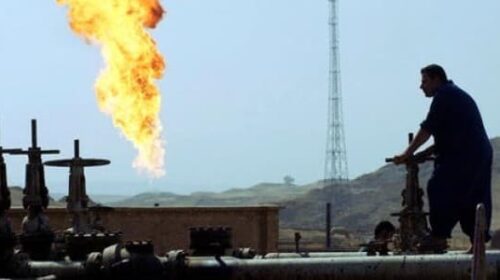Earlier this week, the Public Accounts Committee of the National Assembly of Pakistan was told that a paltry sum of Rs7 billion has been recovered against the outstanding Gas Infrastructure Development Cess (GIDC) of Rs459 billion. In times of tight fiscal constraints, there is not enough money for requisite gas infrastructure.
However, the matter of collecting long pending GIDC amount is of utmost importance. But, in contrast to what happened in its earlier days of collection of this levy, the sum should not be thrown into the fiscal black hole; it has to be rather used for its defined purposes.
GIDC was first introduced in 2011. It was the brainchild of the then petroleum minister, Dr. Asim Hussain. Unfortunately, however, it could never be implemented or imposed in letter and spirit. The thought process was that the gas deficient provinces could be brought at the level of gas surplus provinces through building infrastructure and providing implicit cross subsidy.
And, it could be made possible by collecting cess on indigenous gas from consumers (excluding domestic consumers). Had the GIDC law been implemented in letter and spirit, there would have been no need of WACOG (weighted average cost of gas).
The idea was to use the cess for developing gas infrastructure development projects such as Iran- Pakistan pipeline project, Turkmenistan Afghanistan Pakistan India (TAPI) pipeline project, LNG or other projects, or for price equalization of other imported alternative fuels such as LPG. In today’s context, LNG terminals or North-South pipeline can be developed using GIDC funds. Imported LNG can be cross-subsidized.
When the GIDC was imposed in 2011, the cess was a small amount (Rs13/mmbtu). The amount was too low and there was no issue. Later it was increased to around Rs50/mmbtu. People noticed it. And the factories in Sindh and KP challenged it in the court of law. The GIDC was struck down by courts on the basis that money bill cannot be passed alone through parliament as it has to be routed through Senate as well.
Later, in PML-N government’s tenure, the then government issued an ordinance on GIDC, the Gas Infrastructure Development Cess Act, 2015. However, this could not be ratified by the parliament and lapsed. Later, the bill was passed using the required legal route and enacted as the Gas Infrastructure Development Cess Act, 2015.
However, there was a subtle but significant change from the earlier Ordinance, i.e., omission of the interprovincial disparity. That move killed half the purpose. The implicit WACOG element was omitted. And today the absence of WACOG is haunting the gas sector and raising questions on its sustainability.
The cross-subsidy element of RLNG (mainly for Punjab) through cess collection is not possible under GIDC collection. However, the amount collected can still be used for gas infrastructure development. The amount was supposed to be ring-fenced for the said use. But that never happened.
The industrial and other consumers in Sindh and KP (gas surplus provinces) again went to courts and challenged the GIDC Act. The amount started accruing up and reached over Rs400 billion. Later, in the PTI government’s tenure, the government issued an ordinance to recover 50 percent of the stuck revenues as an-out-of-court settlement. The idea was that the litigation was going to linger the issue and government’s potential revenue would remain stuck.
However, the government was criticized for forgoing half of the amount (over Rs200 billion). The PTI government got cold feet and the ordinance was withdrawn. Resultantly, the ball went back to the court.
The Supreme Court picked up the issue and decided to recover the whole pending amount, albeit in installments, asking the government to start deploying the collected amount for the very said purposes as stated in the Act.
The Supreme Court sorted the legality of the issues. However, the businesses in Sindh and KP went to lower courts to raise technical issues. There are businesses whose prices are regulated, and some of them have passed on the impact of cess to the consumers and haven’t paid anything to the government.
The payable amount for price regulated businesses (till December 2018) was Rs282 billion and Rs134 billion for the deregulated sector. Since the regulated sector has collected the amount from consumers, they should be paying the full amount and late payment surcharge (LPS) as well. Otherwise, it is unjust to the consumers who have paid. These regulated sectors include fertilizer, CNG and power (IPPS and GENCOs).
In case of unregulated sector, some have paid and others have not. The price is market determined and those who have paid are at a disadvantage to those who have not paid. They should be compensated somehow.
Deregulated sectors include industry and captive power plants. It is high time the ball gets rolling on GIDC. The country is short of gas and the infrastructure required is missing. Consumers are paying but government is not getting the due amount. This matter should be resolved on priority.







